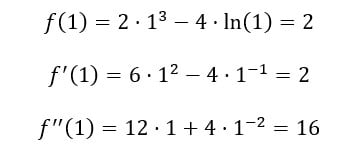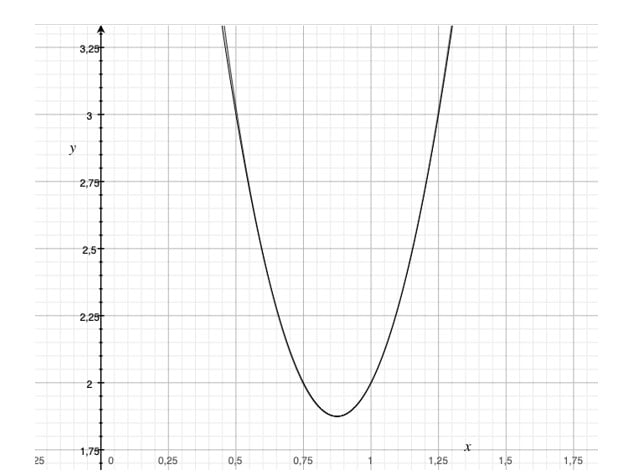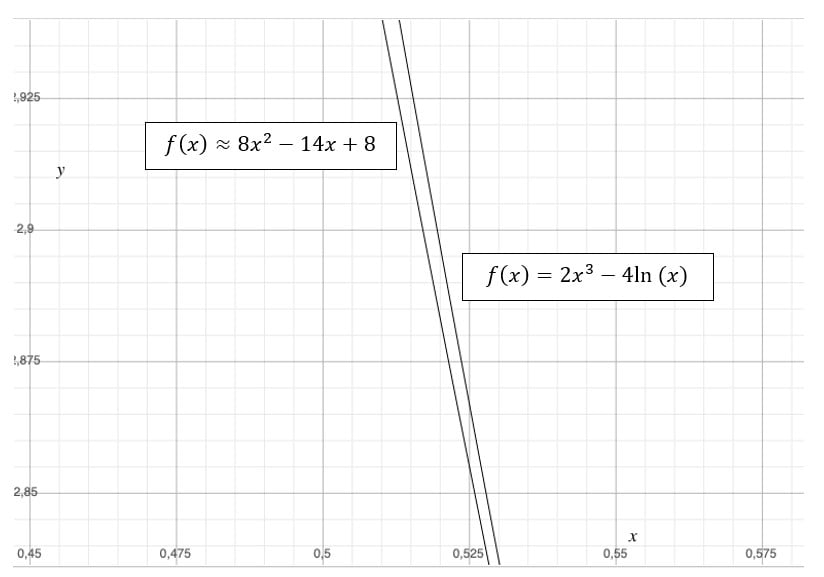The Taylor polynomial is a polynomial approximation of a function n times differentiable at a specific point.
In other words, the Taylor polynomial is a finite sum of local derivatives evaluated at a specific point.
Mathematically

We define:
f (x): function of x .
f (x 0 ): function of x at a specific point x 0 . Formally it is written:

f (n) (x): n- th derivative of the function f (x).
Applications
The Taylor expansion is generally applied to financial assets and products, whose price is expressed as a non-linear function. For example, the price of a short-term debt security is a nonlinear function that depends on interest rates. Another example would be options, where both risk factors and profitability are nonlinear functions. Calculating the duration of a bond is a first-degree Taylor polynomial.
Taylor polynomial example
We want to find the second order of the Taylor approximation of the function f (x) at a point x 0 = 1.

1. We make the relevant derivatives of the function f (x).
In this case they ask us until the second order, then, we will make the first and second derivatives of the function f (x):
- First derivative:

- Second derivative:

2. We substitute x 0 = 1 in f (x), f ‘(x) and f’ ‘(x):

3. Once we have the value of the derivatives at the point x 0 = 1, we substitute it in the Taylor approximation:

We fix the polynomial a bit:

Values check
The Taylor approximation will be adequate the closer to x 0 the values are. To verify this, we substitute values close to 0 in both the original function and the Taylor approximation above:
When x 0 = 1
Original function:

Taylor approximation:

When x 0 = 1.05
Original function:

Taylor approximation:

When x 0 = 1.10
Original function:

Taylor approximation:

In the first case when x 0 = 1, we see that both the original function and the Taylor approximation give us the same result. This is due to the composition of the Taylor polynomial that we have created using local derivatives. These derivatives have been evaluated at a specific point, x 0 = 1, in order to obtain a value and create the polynomial. So the further from that particular point, x 0 = 1, the less appropriate the approximation for the original nonlinear function will be. In cases where x 0 = 1.05 and x 0 = 1.10 there is a significant difference between the result of the original function and the Taylor approximation.
But … The difference is very small, right?
Taylor polynomial representation

If we extend the extremes (where the approximation moves away from x 0 = 1):

At first glance it may seem insignificant but when we are working on the graph and making approximations it is very important to take into account at least the first four decimals. The basis of approximations is precision.